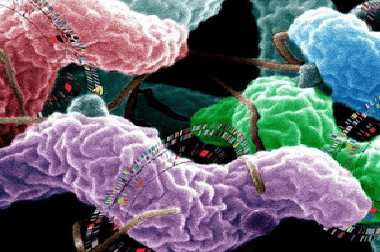Infectious diseases >>>> Campylobacteriosis - ways of infection and methods of prevention
Campylobacteriosis - ways of infection and methods of prevention.

Campylobacteriosis is an infectious, acutely recurrent intestinal disease caused by the non-spore-forming bacterium Campylobacter. Campylobacteriosis refers to zoonotic diseases due to the fact that animals (poultry, livestock) are primarily infected and are carriers of the bacteria, from which a person becomes infected when contacting or eating animal products obtained from infected animals. Campylobacter is a pathogenic microorganism that can penetrate not only into the gastrointestinal tract, where it affects the mucous membrane of the small intestine, causing inflammation, hyperplasia, erosion, ulcers and disrupting digestion, but it is also able to penetrate into other tissues and organs, causing myocardial damage, lung tissue, liver, medulla, placenta, while causing infective endocarditis, hemorrhage, inflammation of the meninges, infection of the fetus, miscarriages. If the colonies of bacteria spread throughout the body (form many foci of infection), then the disease takes on a desiminated form and we are talking about sepsis.
The genus Campylobacter has about fifteen species of bacteria, of which nine are dangerous to humans. The complexity of the course of the disease, signs of its manifestation and complications caused by campylobacteriosis depend on the degree of virulence of the pathogen. The disease is more susceptible to the elderly, children under two years of age and people with weakened immunity. Campylobacteriosis can be asymptomatic, have symptoms similar to intestinal disorders (gastroenteritis, colitis), food poisoning, and in the septic form, the symptoms of the disease reflect the disease of a specific organ.
The most typical signs of campylobacteriosis are:
- diarrhea,
- nausea,
- vomiting,
- high temperature,
- headaches and other signs of general intoxication of the body.
Signs of campylobacteriosis are observed for about a week, with a mild course of the disease they pass on their own and do not require special treatment except for the restoration of water and electrolyte balance (replenishment of fluid and microelements in the body) and other methods of detoxification of the body (intake of enteroadsorbents). Antibiotic therapy is prescribed in difficult cases of the course of the disease and includes tetracycline antibiotics, quinolones, macrolides). A person, having undergone campylobacteriosis, can be cured completely or become a carrier of the bacteria. Carriers of the Campylobacter bacteria also require the use of antibiotic therapy.
Prevention of campylobacteriosis is directly related to the potential routes of its spread and includes measures to maintain the hygiene of hands, household items, workplaces and tools (especially for people working in the livestock industry). Households raising poultry and livestock should take care of the veterinary checks of the animals.
The method of preparing food from livestock and poultry products is of great importance in preventing infection with Campylobacter. Since Campylobacter bacterium dies at a temperature of 100 in Celsius is recommended before meals (meat, milk and the like), it is thermally processed, leading to a water boiling temperature. The withdrawal of water from natural sources can cause contamination, therefore drinking water must be boiled.
Prevention of campylobacteriosis is similar to prevention of food poisoning and requires careful attention to the preparation and consumption of food.

Read

Read



























